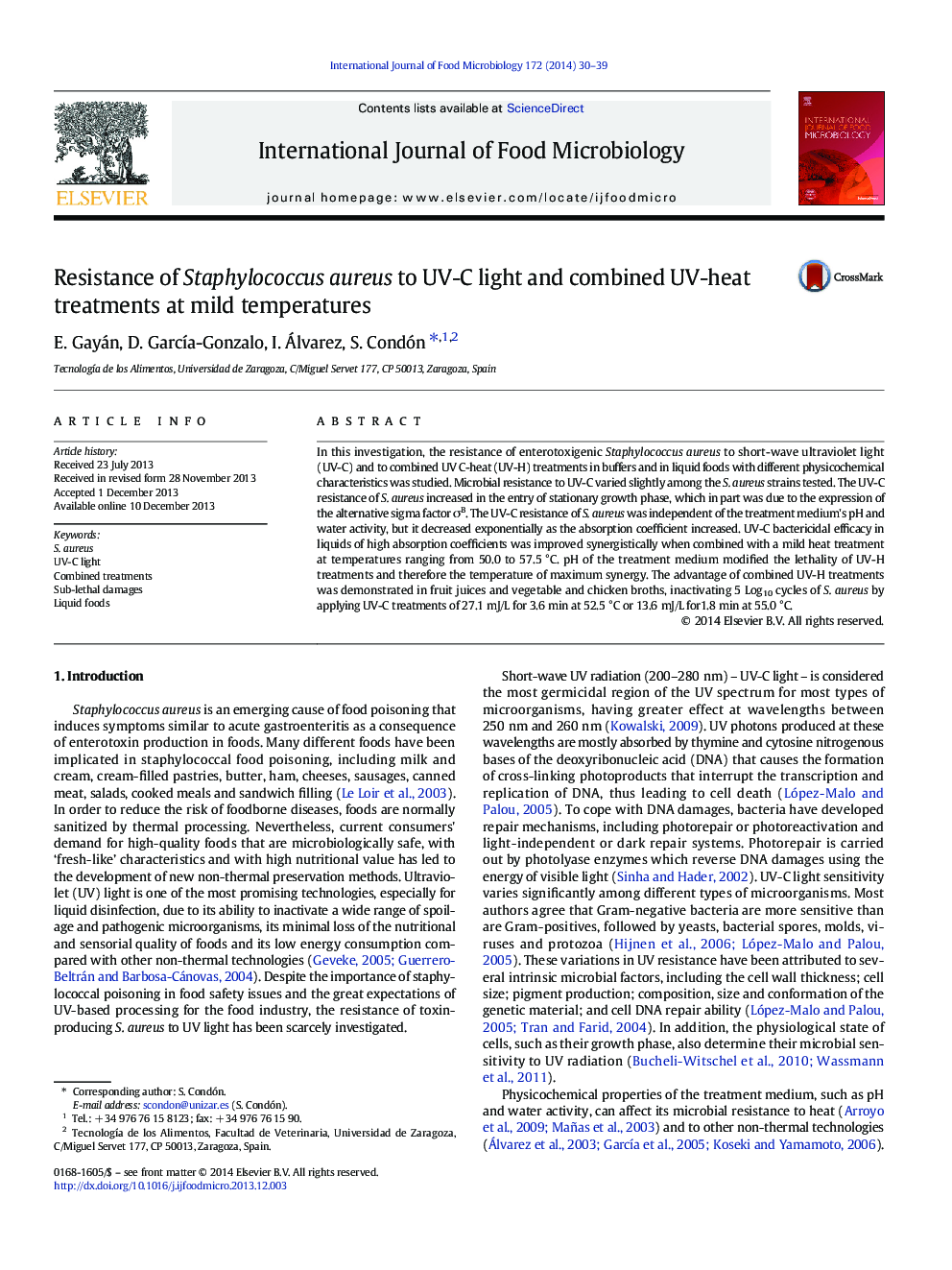| Article ID | Journal | Published Year | Pages | File Type |
|---|---|---|---|---|
| 6290111 | International Journal of Food Microbiology | 2014 | 10 Pages |
â¢Enterotoxigenic S. aureus was more sensitive to UV-C irradiation than were other foodborne bacteria.â¢The inactivation rate of S. aureus increased exponentially with the medium's absorptivity.â¢The lethal effect of UV light synergistically increased with temperatures between 50.0 °C and 57.5 °C.â¢The temperature of maximum UV-H synergy depended on the pH but not on the magnitude of such effect.â¢UV-H treatments increased the number of sub-lethally cytoplasmic membrane-injured cells induced by heat.
In this investigation, the resistance of enterotoxigenic Staphylococcus aureus to short-wave ultraviolet light (UV-C) and to combined UV C-heat (UV-H) treatments in buffers and in liquid foods with different physicochemical characteristics was studied. Microbial resistance to UV-C varied slightly among the S. aureus strains tested. The UV-C resistance of S. aureus increased in the entry of stationary growth phase, which in part was due to the expression of the alternative sigma factor ÏB. The UV-C resistance of S. aureus was independent of the treatment medium's pH and water activity, but it decreased exponentially as the absorption coefficient increased. UV-C bactericidal efficacy in liquids of high absorption coefficients was improved synergistically when combined with a mild heat treatment at temperatures ranging from 50.0 to 57.5 °C. pH of the treatment medium modified the lethality of UV-H treatments and therefore the temperature of maximum synergy. The advantage of combined UV-H treatments was demonstrated in fruit juices and vegetable and chicken broths, inactivating 5 Log10 cycles of S. aureus by applying UV-C treatments of 27.1 mJ/L for 3.6 min at 52.5 °C or 13.6 mJ/L for1.8 min at 55.0 °C.
